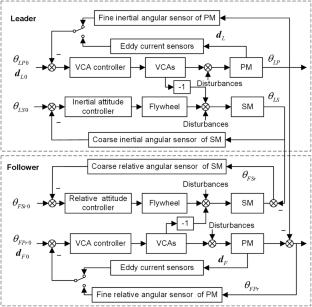Experimental Investigation of Composite Formation Flying Using Disturbance-Free Payloads
Abstract
Precise formation control is increasingly demanded in high-resolution remote sensing formations, gravitational detection interferometers and distributed space telescopes. One composite formation flying method using disturbance-free payloads was previously proposed to enhance formation accuracy and payload stability. This method divided satellite formation into coarse formation using conventional satellite buses and fine formation using precise payloads. To verify the effectiveness of the proposed formation method and the payload stability performance, this paper develops an experimental system using two air-floating satellite prototypes. First, the experimental design is proposed and the experimental system model is established. Second, the experimental prototype development and system architecture are described in detail. Finally, the composite formation flying effectiveness is further demonstrated by coarse and fine formation control experiments. The experiment results indicate that the composite formation flying method effectively improves the formation accuracy for distributed payloads and isolates microvibrations from satellite buses to enhance payload stability.



 求助内容:
求助内容: 应助结果提醒方式:
应助结果提醒方式:


